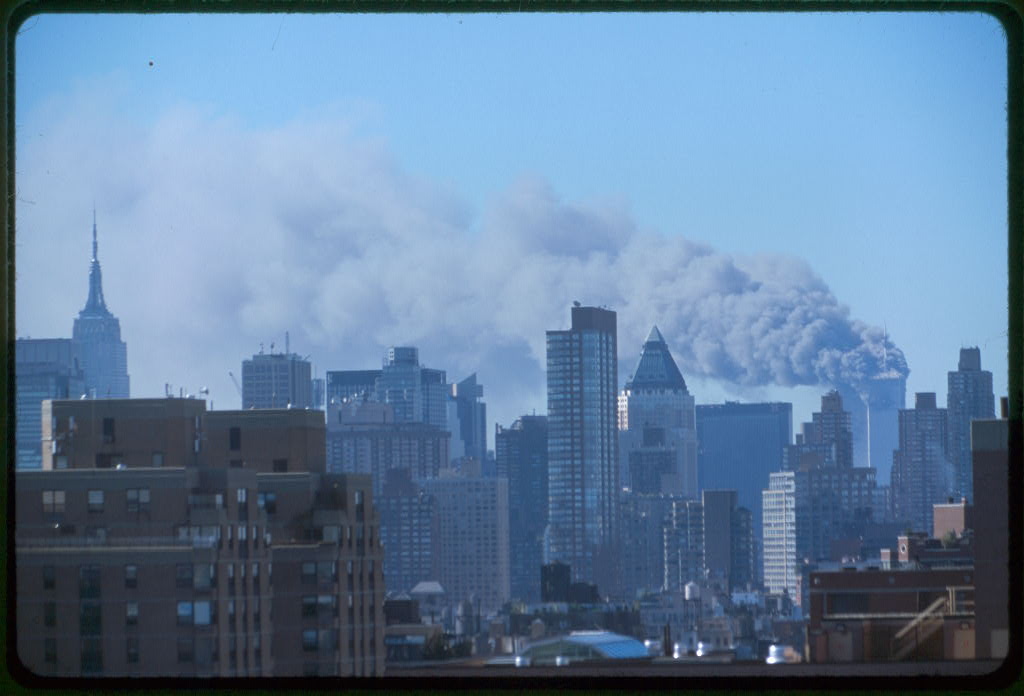
The September 11th terrorist attacks marked a shift in tone and tactics for US domestic politics and foreign policy. For an entire generation, it was a watershed moment. The event generated a new vocabulary that redefined identity along binaries that separated us from them. In this context, otherwise contentious legislation and policy found footing in the uncertain political landscape.
Conventional notions of privacy and civil liberties underwent revision as those charged with national security attempted to grasp the new reality where non-state actors can wield international influence. During my time at Penn State, I joined the conversation, offering analysis and commentary on a number of contemporary issues facing America’s leaders today. As a member of the 2011 cohort of Presidential Fellows with the Center for the Study of the Presidency and Congress (CSPS), I dissected the polarizing debate surrounding the 2011 reauthorization of the USA PATRIOT Act (below).
A Faustian Dilemma?
The USA PATRIOT Act and the Comprimise between National Security and Civil Liberties
On September 20, 2001, President George W. Bush addressed the nation in the wake of the tragic terrorist attacks of September 11: “I’ve directed the full resources of our intelligence and law enforcement communities to find those responsible and bring them to justice.” In the subsequent investigations, the 9/11 Commission would argue that an artificially legislated “wall” prevented those charged with National Security from performing their duties. Rather than evolving from a Cold War approach to intelligence gathering, law enforcement and intelligence collection remained distinct and separate operations, preventing the right information from reaching the right people. The report describes a cumbersome bureaucratic process, burdened by tradition:
“Instead of facing a few very dangerous adversaries, the United States confronts a number of less visible challenges that surpass the boundaries of nation-states and call for quick, imaginative and agile responses.” (399)
The Patriot Act promised to rectify these shortcomings, equipping our law enforcement with the legal tools necessary to prevent future attacks rather than the traditional emphasis on prosecution following a crime. Drafted by the U.S. Justice Department and signed into law by President Bush on October 26, 2001, the USA PATRIOT Act bypassed conventional standards of the legislative process as part of an expedited response to the terrorist attacks of September 11. This moment marked a drastic shift in the FBI’s role and, as later investigations would suggest, perhaps one the agency was not prepared for…
Read More:
More importantly, I explored these topics across disciplines, synthesizing a wide breadth of course material to better understand the phenomenon of terrorism. In PHIL 298H (Patriarchal Force and Political Power), I applied Ancient Greek and Modern Feminist philosophy to evaluate US counterinsurgency operations in Iraq. In the resulting paper, “Lock Away the Thunderbolts” (below), I argue that the dichotomous representations inherent to military strategy may be counter-productive to US interests post-9/11. Writings by Laura Sjoberg (on Just War Theory) and Luce Irigaray (on language as a tool of subjugation) would prove integral to my future inquiries into justice — a critical component of terrorism.
Locking Away the Thunderbolts
May 06, 2009
This dichotomous representation of contemporary warfare frequently translates into counter-productive strategies, such as the “shock and awe,” “hearts and minds,” and even “the surge” campaigns. New counterinsurgency doctrine was intended to rectify the mistakes of the past but instead perpetuates the logic that undermines success, framing the contest in terms of counterinsurgency/insurgency and adhering to the same antiquated notions of what constitutes success/failure. Statistics ranging from body counts to votes all measure the currency of physical security that militaries deal in rather than reflect the trueeconomy of insurgencies. While the new doctrine addresses a few mistakes of the recent past, it reinforces many of the same fallacies, representing “insurgency” as a negation of “conventional” warfare and establishing the “counterinsurgency” as its “opposite”…
Read More:
During my studies on conflict (including a semester coding data for the Militarized Interstate Disputes (MID) data set), the concept of retributive justice appeared time and again, and terrorism seems no different in this regard. Previous attempts at justice in response to war crimes, such as international tribunals, all seem to emphasize retribution rather than reconciliation. “Justice and Genocide” (below) surveys existing literature and argues that this logic perpetuates conflict in many cases, another instance of good intentions gone awry. The accompanying slides (below) provide a graphic addendum to the arguments within, illustrating how populations tend to self-segregate — rather than reintegrate — following conflict.
Justice and Genocide:
Post-Genocide Transitional Governments
Transitional governments in post-genocidal states typically prop up victim groups in positions of power where they seek a policy of justice, usually by filling prisons and courtrooms with the perpetrators. Such action generally results in a mutual, lingering resentment between ethnic and religious groups, which generally translates into continued conflict or a mass exodus of refugees. Either outcome can have a destabilizing impact on the region. Ultimately, individual states and the international community must grapple with the question of how to “set things right” after they have gone so horribly wrong.
In order to break this cycle of retribution, justice in post-genocidal societies must emphasize reconciliation – that is, political inclusion for dispossessed parties, particularly the leadership, which may necessitate the contentious policy of amnesty. Initially, a post-genocidal society that forces perpetrators and victims into close physical proximity will no doubt be fraught with tension. International organizations must contribute to an atmosphere of equity and security that ensures such a society has the opportunity to heal…
Read More:
The Justice and Genocide visual addendum can be viewed as